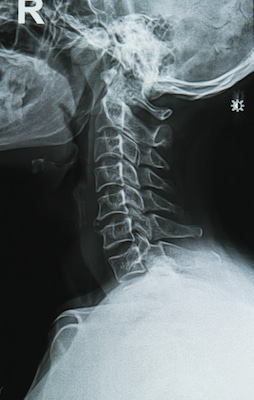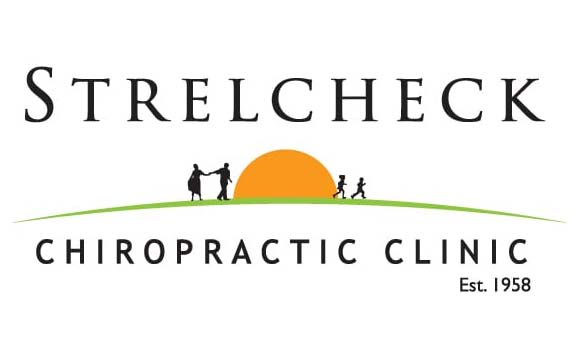
Whiplash is a relatively common injury that occurs to a person’s neck (cervical spine) following a sudden force that causes unrestrained, rapid forward and backward movement of the head and neck. And while whiplash typically is associated with a vehicle accident, my experience has shown that in an inordinate amount of patients experiencing referred pain and symptoms, that pain actually stems from whiplash that occurred at a very early age. In fact, I estimate that up to 85 percent of the patient X-rays I review confirm an incident of whiplash occurred in early childhood. This makes sense when you consider the number of significant falls taken by an active child learning to walk, ride a bike, swing on a swing, navigate stairs and so on.
Our spines are built like a slinky with curves in it to absorb the stress and gravity pushing down on us. The upper back (thoracic spine) adapts to injury of the cervical spine by sinking in, lessening the severity of the natural cervical curve as it transitions into the thoracic upper back curve. The only time the body is this flexible to adapt is when a child is very early in life, four years or younger.
The term “whiplash injury” describes damage to both the bone structure and soft tissue, while “whiplash associated disorders” describes a more severe and chronic condition.
As one of the most common auto accident injuries and can occur at speeds as slow as five mph. Even if you walk away from an accident with just a few bumps and bruises, your cervical spine may be out of alignment. Symptoms of whiplash injury include recurring headaches and migraines, neck pain-stiffness or reduced range of motion, shoulder pain, numbness or tingling in the arms and dizziness. You may also find it difficult to concentrate on simple tasks and suffer from sleep disturbances.
Whiplash can lead to a prolonged period of partial disability, which is why it accounts for a high percentage of disability claims, sick leave and litigation.
Chiropractic care is an effective treatment for whiplash. This is because spinal adjustments correct the underlying cause for a patient’s pain — in the case of whiplash, the cervical spine misalignment — rather than relying on medication to cope or cover up pain or reduce swelling. As long as the cervical spine is out of alignment, co-located nerves will be compressed and continue to trigger neck pain, headaches, migraines and more. Restoring proper alignment to the cervical spine is critical to relieve pain and symptoms.
In addition to chiropractic adjustments, many of my patients also benefit from complementary treatments, such as massage therapy and physical rehabilitation exercises. These treatments relieve muscular tension, break up scar tissue adhesions, relieve pain and help restore a full range of mobility to the neck.




